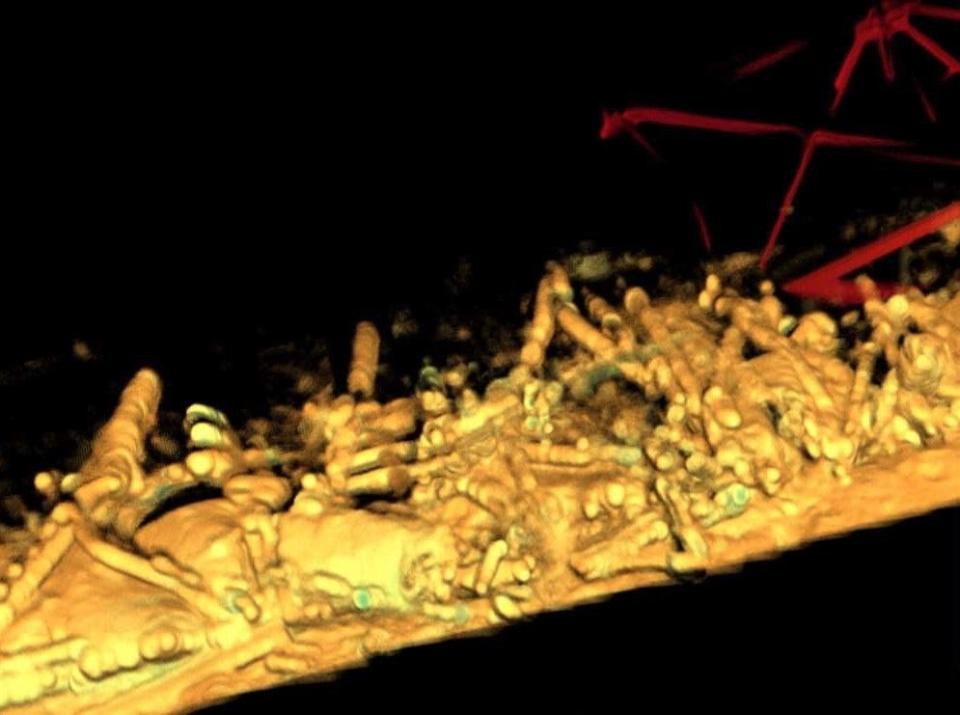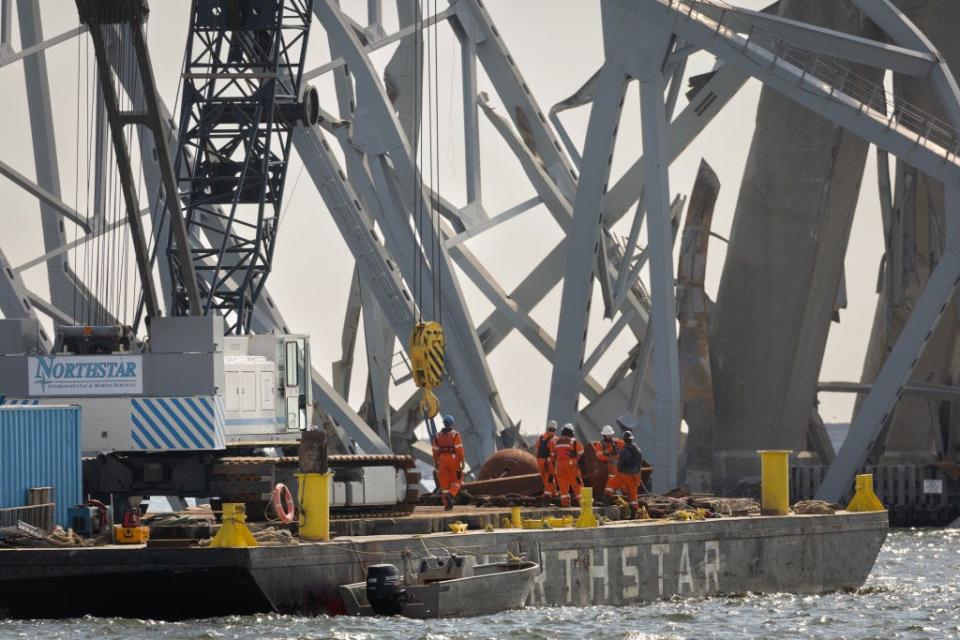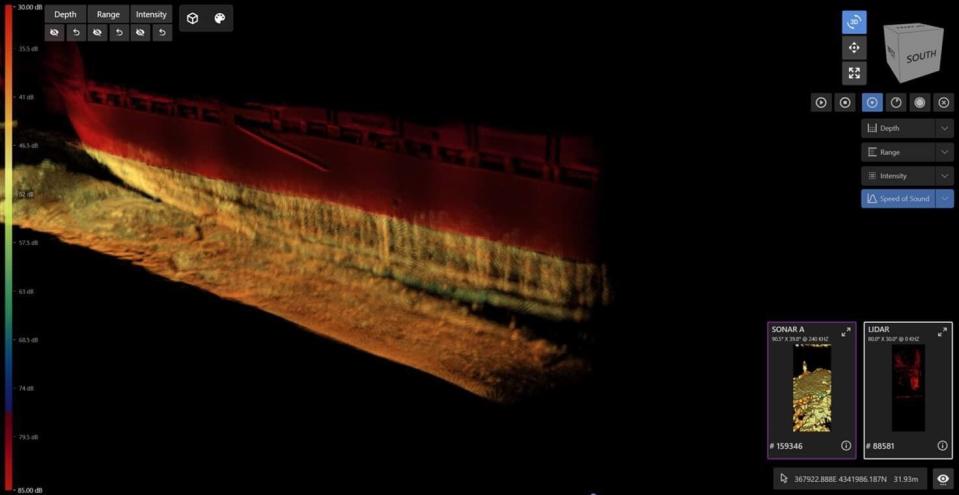New sonar images show wreckage from Baltimore bridge collapse at bottom of river
As efforts are being made to clean up and remove debris of the collapsed Francis Scott Key Bridge in Baltimore, new images show the remains of the bridge at the bottom of the Patapsco River.
Sonar images supplied by the U.S. Navy’s Naval Sea Systems Command (NAVSEA) Supervisor of Salvage and Diving (SUPSALV) and released by the U.S. Army Corps of Engineers, Baltimore District Tuesday "shows the wreckage resting at the bottom of the river where the Francis Scott Key Bridge once stood," with visibility "clouded to just one to two feet because of the four to five feet of mud and loose bottom of the Patapsco River," according to the department.
The images were obtained via a primary sonar tool called CODA Octopus, said the department.
Watch: Pieces of Francis Scott Key Bridge removed from Baltimore port after collapse
When did the Baltimore bridge collapse happen?
The Francis Scott Key Bridge collapsed on March 26 after a massive cargo ship rammed into it, causing the structure to crumble into the Patapsco River and kill six workers who were patching potholes. The accident also blocked access to the Port of Baltimore, a vital shipping port.
Divers working in 'virtual darkness'
U.S.A.C.E. Baltimore explained that divers working on the bridge are carrying out their activities "in virtual darkness because when lit their view is similar to driving through a heavy snowfall at night with high-beam headlights on.” They are also being given detailed verbal directions by operators on nearby vessels viewing imagery in real-time.
"No usable underwater video exists of the wreckage, because as one Navy diver stated, 'there’s no need take video of something you can’t even see'," the department said.

Restoring the Port of Baltimore
Restoration efforts began on Sunday night when the first major section of debris was removed from the debris field that blocked entry into the Port of Baltimore. A crane lifted a 200-ton piece of the bridge, but Democratic Gov. Wes Moore said thousands of tons of debris remain in the river and above the ship.
Some 1,100 personnel from the Army Corps of Engineers, along with highly specialized equipment, were deployed to remove the debris and reopen the nation's largest vehicle handling port.
The keel of the stricken commercial vessel Dali also rests in sediment at the bottom of Baltimore Harbor, weighed down by a portion of the Francis Scott Key Bridge, complicating efforts to clear the channel, according to a senior U.S. official.

Another official described the submerged steel and concrete wreckage as a spaghetti mess more tangled than the debris visible above the water.
Removing the wreckage is a massive task. Much of the steel is twisted, some of it on the floor of the channel, 50 feet below the surface. Engineers must determine which portions are under tension before cutting it into pieces. Divers have to navigate currents, limited visibility, cold water and lethally sharp debris.
The bottom of the channel must be completely cleared of debris because huge ships like the Dali clear the bottom by no more than two feet when they're fully loaded, Lt. Gen. Scott Spellmon, the commander of the Army Corps of Engineers, told USA TODAY last week.

Latino communities 'rebuilt' Baltimore. Now they're grieving bridge collapse victims
'Not just about Maryland'
While a timeline for the cleanup has not yet been outlined, Gov. Moore expressed urgency over the matter.
"This is not just about Maryland. This is about our nation's economy," Moore said at a press conference on Saturday. "The port handles more cars and more farm equipment more than any other port inside this country."
The Biden Administration approved his initial request of $60 million to begin the cleanup process but he said much more is required to restore the bridge.
President Joe Biden will visit the site on Friday, White House press secretary Karine Jean-Pierre announced on Monday.
Contributing: Tom Vanden Brook, Anthony Robledo, USA TODAY
Saman Shafiq is a trending news reporter for USA TODAY. Reach her at sshafiq@gannett.com and follow her on X, the platform formerly known as Twitter @saman_shafiq7.
This article originally appeared on USA TODAY: Baltimore bridge collapse: New sonar images show wreckage underwater

